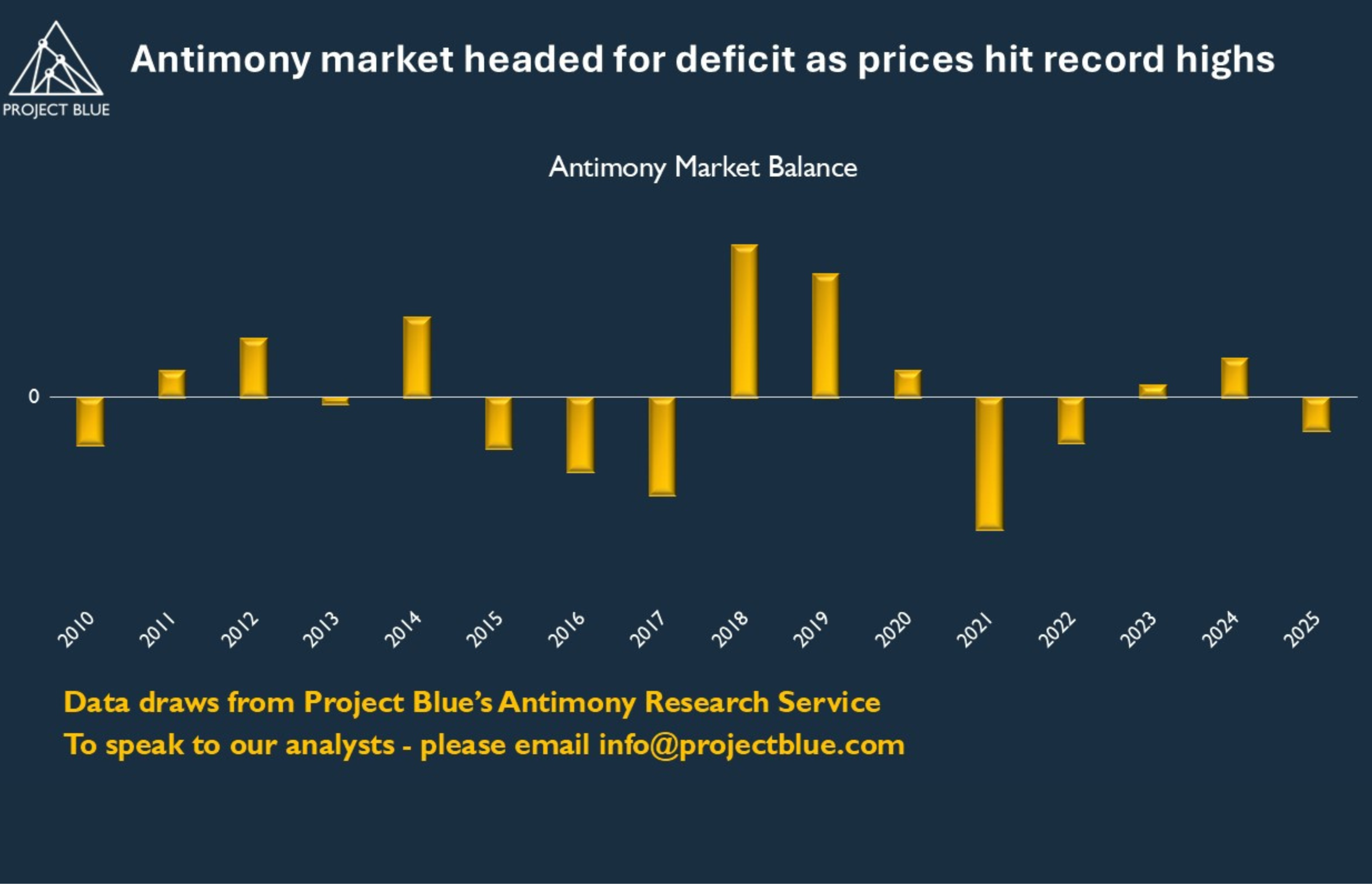Antimony projects mobilise amidst record prices
Opinion Pieces

15
Oct
2024
Antimony projects mobilise amidst record prices
Projects across the antimony supply chain look to benefit as antimony prices continue to hit record prices, with the cost of ingot in Europe edging over US$26,000/t in October, while in the USA the US$27,000/t mark already breached in September.
All in recent news: Military Metals signed a letter of intent to acquire two antimony assets in Slovakia from Molten Metals, adding to the company’s West Gore project in Canada. Antilles Gold revived news around its La Demajagua gold-silver-antimony project in Cuba, originally set to come online this year, but a new scoping study is now in the pipeline. Felix Gold is accelerating a capital raising for near-term antimony production at its Crafford mine in Alaska, USA. Octava Minerals is locking in approvals to explore the Yallalong antimony project in Western Australia. And several more…
Antimony prices surged to record levels in end May and June 2024, when they broke the US$20,000/t mark for the first time. Simply put, the surge in prices is related to feedstock availability in China for ingot smelting. On 18 August, China’s Ministry of Commerce (MOFCOM) announced export controls on a variety of forms of antimony including antimony ore, metal, and oxides. For more details on this, please see our Blue View following the announcement. Prices were already elevated, and Project Blue pointed towards the regulations coming in to place a protective measure for domestic supply availability.
Despite the regulation coming into force on 15 September 2024, prices for ingot in China have started to drop slightly. However, the premium of antimony products outside of China has soared as a result, increasing to 15-23% in September from 0-7% in March 20204. As the development continues to bifurcate, cost differentials could start to reach record levels over Q4 this year.
With antimony representing a key material in military applications, the element already found itself listed as a critical material in the USA and the EU. In China, demand for the element recently soared for its use in solar PV glass, where it offers several energy efficiency improvements in its chemical compound form – sodium antimonate.
Most of the antimony ingot produced comes out of China, but the West has diversified its supply chain to alternative sources, however, these also carry supply chain risks. Vietnam is a key supplier of antimony ingot, but the mostly Chinese-owned smelters consume Russian ores. Even in China, the use of antimony concentrates from Polyus, the largest miner of antimony in 2018 and 2023, has been cautious in order not to be impacted by European and US sanctions on the export market. Tajikistan used to be a prominent supplier of low-cost antimony concentrate to China, which was discounted due to its deleterious mercury content. Now, much of the concentrate is refined locally into ingot by the US-owned operation and shipped to the West. And lastly, Thailand and Myanmar (both consuming antimony concentrates from Myanmar) are becoming prominent alternatives to Chinese made antimony metal, however, Chinese ownership and a conflict-stricken Myanmar remain a cause for concern for Western consumers.
All this leads to a landscape for increased alternative supply for the West. In Oman, the Oman Antimony Roaster was set up for just such a purpose, but technical issues and a lack of consistent feedstock saw the plant shut before it could produce any significant volumes.
With projects looking to come online, the target market for concentrate will be China, which is starved for material as smelters continue to operate at low rates due to feedstock shortages. Alternatively, Vietnamese smelters could look to diversify their antimony source away from Russia to remain accessible to European and US markets.
The United States Antimony Corporation (USAC) is the last standing smelter in the USA; however, the company only has limited capacity and has focused on trioxide production and certain niche military applications. The company used to source concentrate from its mines in Mexico, which were recently suspended due to high costs of operation. As a result, the Thompson Falls smelter in the USA is now operating at a reduced capacity. In the wake of the recent news, USAC has announced that it is reviewing the potential to increase its smelting capacity, but not noting if that is just returning to nominal capacity or investing in larger capacity. Regardless, USAC noted that it is looking to a variety of sources to fill its potential capacity, rather than explicitly restarting operations in Mexico.
According to Project Blue’s forecast, the supply will continue to be volatile and the market swinging between surplus and deficit. This is linked to the metal’s increasing reliance as a by-product of gold mining. If prices remain high, secondary lead smelters have an opportunity to recover antimony from recycled lead products and purify these for high-end applications. The industry cost curve has seen increasing low-cost material enter the market thanks to its association with lode gold deposits.
Project Blue sees the feedstock tightness continuing into 2025 and 2026, but if a ramp up in supply can keep pace with rapid growth in solar demand, prices would start to drop back in the medium term. Delays to projects could therefore mean that developers miss the opportunity to take advantage of the current market dynamics and would also more likely require collaboration with Chinese smelters, therefore not addressing the geopolitical critical material narrative.